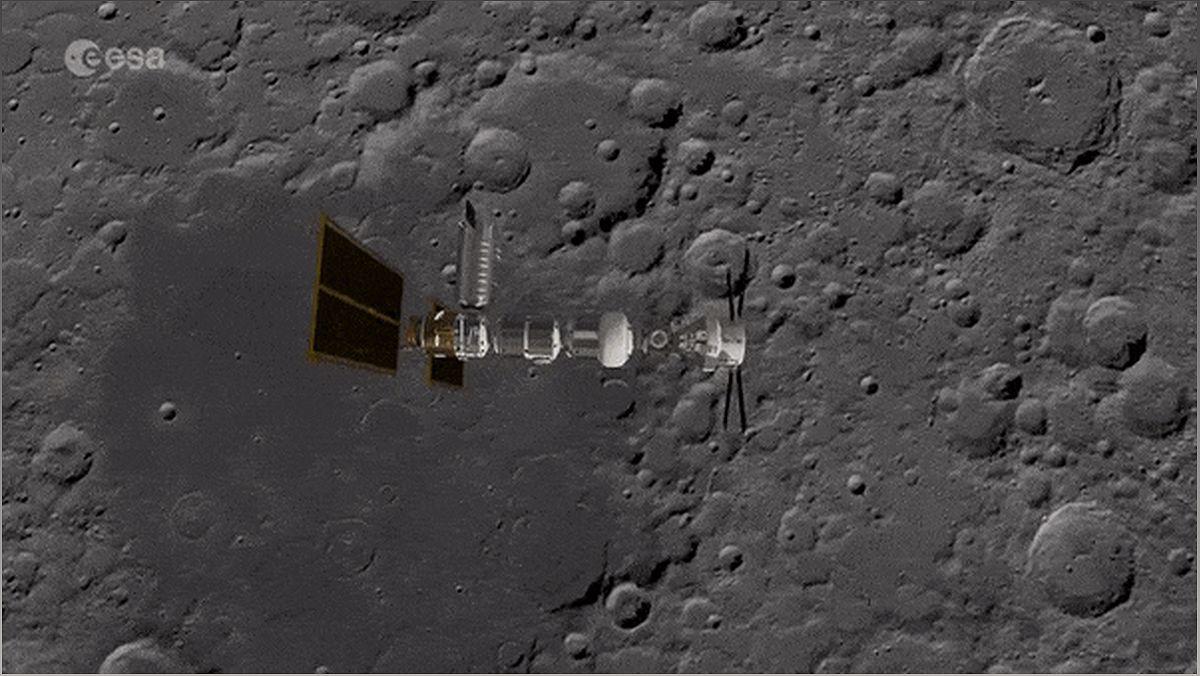Embark on a journey through the history of European manned modules, from the groundbreaking Spacelab to the upcoming Gateway station. Join me, Jennifer Smith, as we delve into the technological advancements and contributions of European space agencies that have shaped the future of space exploration. Get ready to be amazed by the evolution of these modules and their crucial role in scientific research and human exploration initiatives.
The Birth of Spacelab: ESA's First Manned Module
Explore the historic launch of Spacelab and its transformation of NASA's space shuttle into a mini-space station for scientific research.
In a monumental moment 40 years ago, the European Space Agency (ESA) embarked on its first manned spaceflight mission with the launch of Spacelab. Accompanied by the first ESA astronaut, Ulf Merbold, Spacelab transformed NASA's space shuttle into a hub for scientific research.
Manufactured using the space-grade aluminum-copper alloy 2219 in Turin, Italy, the pressurized shells of Spacelab were a testament to European industrial prowess. These shells, made of millimeter-thick sheets, formed the fundamental structure of the module, maintaining the vacuum of space at a distance.
With a length of 6.7 m and a diameter of 4.1 m, Spacelab served as a precursor to the European modules that followed, such as the Columbus laboratory on the International Space Station (ISS) and the modules for the upcoming Gateway station.
Through the years, European manned modules have evolved, incorporating advancements in technology and welding techniques. Today, the European pressurized shells for modules like Axiom and Cygnus are welded using friction stir welding, resulting in stronger welds and improved performance.
European Manned Modules: From ISS to the Gateway Station
Discover the ongoing contributions of European modules to the International Space Station and the upcoming Gateway station orbiting the Moon.
Following the success of Spacelab, European contributions to manned modules continued with the Columbus laboratory on the ISS. This module, along with others like Node 2, Node 3, and Cupola, expanded Europe's presence and capabilities in space.
Europe's involvement extended to cargo vehicles as well, with the Automated Transfer Vehicle (ATV) and Cygnus playing vital roles in resupply missions to the ISS. These vehicles showcased Europe's expertise in delivering essential resources to astronauts in orbit.
Looking ahead, the European Service Module (ESM) will power NASA's Orion lunar orbiter, while modules for the Axiom private space station and the Gateway station are also in development. These modules will further enhance Europe's role in human exploration initiatives, both in low Earth orbit and beyond.
Technological Advancements: Welding Techniques and Design Innovations
Explore the technological advancements in welding techniques and design innovations that have shaped European manned modules.
One of the significant advancements in European manned modules is the use of friction stir welding. This technique, employed in the latest pressurized shells for modules like Axiom and Cygnus, results in stronger welds by softening the metals instead of melting them. The friction-based assembly process ensures improved performance and durability.
Moreover, European modules have evolved in design to optimize space utilization and accommodate the needs of astronauts. From the top and bottom orientation of earlier modules to the efficient use of available space in the upcoming Gateway station, designers have prioritized human factors and crew performance.
Additionally, the modules' development teams have sought input from experienced astronauts, such as Samantha Cristoforetti, Alexander Gerst, and Luca Parmitano, to ensure the modules meet the requirements of living and working in space. Their valuable insights have contributed to improvements in lighting, layout, privacy, and other aspects crucial for astronaut well-being.
The Gateway Station: Europe's Continued Presence in Space
Learn about Europe's significant contributions to the Gateway station, a lunar outpost that will play a crucial role in future lunar exploration.
Europe's involvement in space extends to the upcoming Gateway station, a lunar outpost that will serve as a living space for astronauts on extended missions. The International Habitat module (I-Hab), developed by Europe, will provide a home for four-person crews for 30 consecutive days.
Mark Wagner, head of the Reference, Verification, Assembly, Integration, and Test team for the Gateway station, emphasizes the importance of compatibility with partner agencies like NASA, the Canadian Space Agency, and the Japanese Aerospace Exploration Agency. Collaborative efforts ensure seamless integration and functionality of the modules within the international Gateway program.
As Europe continues to contribute to the Gateway station, the development of modules like I-Hab and the ESPRIT resupply module is underway. These modules will not only support lunar exploration but also pave the way for future human missions to Mars.

